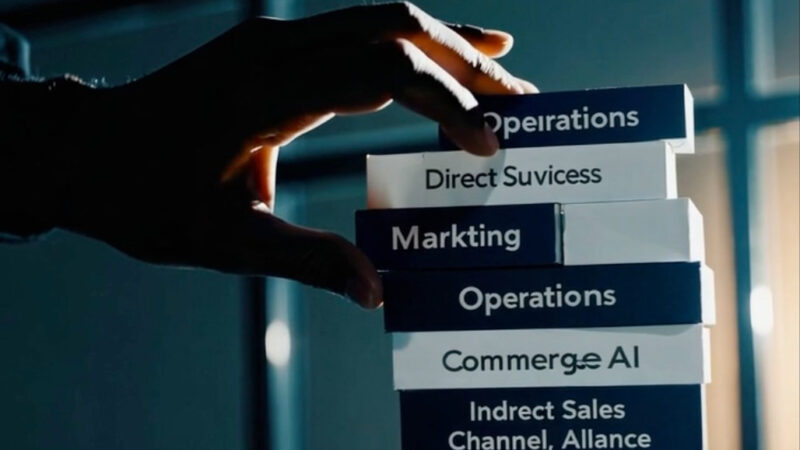HR/People at an AI Company
People & Culture at Conversica (The Wins)
I had committed to 5 years, and even though I didn’t envision it taking as long as it did, we finally achieved most of what we originally set out to accomplish back in October 2019.
When I took the CEO seat in late 2019, I knew building a differentiated product was only half the equation. The other half? Building a culture that could scale transformation. HR wasn’t an afterthought—it was a competitive advantage. Rafael Zamora and I were the architects of that advantage, working from the top down.
We didn’t do HR like our peers. We made it strategic, fearless, and human. We committed to tearing down the wall between the executive team and the broader staff. We turned leadership into listeners and truthsayers.
We embedded “real-issue” forums into our operating system—weekly executive roundtables where anyone could surface uncomfortable truths without fear. These weren’t typical status meetings. We defined a “real issue” as something that made your stomach churn. Something emotionally raw, uncomfortable, and likely affecting people deeply. We believed that if a topic had the potential to blow the team apart, it was exactly the kind of conversation that would make us stronger. There were no secrets, no sidebars—only radical candor in a safe, structured environment.
Also, we weren’t just collecting employee engagement data—we were confronting it. Rafael rolled out monthly manager forums, DEI councils, and a real-time pulse system to capture how people felt, not just how they performed. We made MBTI a strategic tool, not an HR gimmick. We used personality insights to resolve conflict, tailor coaching, and hire more intelligently.
And culture? It wasn’t posters and perks. It was performance. We tied culture to real metrics like ARR bookings, renewals, and cash expenditures. Each year we embraced a new company theme which was people-first, inside and out. Each year, while we were in the middle of re-architecting the business, culture was our constant. Revenue diversity in 2020, partner ecosystem in 2021, community in 2022, a push to go global in 2023, and finally in 2024, with eyes on liquidity, we didn’t dilute our values—we doubled down.
We built a place where people didn’t whisper their concerns—they voiced them. A company where psychological safety wasn’t a slide—it was a system. You stayed because you thrived in performance culture. You left, because transparency doesn’t leave any place for poor performance to hide.
People Strategy – Strategic Headwinds (The Losses)
We got a lot right—but not everything.
Early on, our culture was fragmented. Legacy silos made it hard to unify under a single operating rhythm. Feedback was often received, but not always acted on with urgency. In 2020, especially during the stress of COVID, we learned that listening is a discipline—but following through is a craft.
In some cases, our bets on internal mobility were too slow. High performers wanted career growth in months, not years. And while we were proud of our DEI intent, there were moments where progress didn’t match ambition. Rafael would be the first to tell you—diversity is only half the journey. Inclusion is where the real work begins.
And while we embedded culture into QBRs, manager meetings, and roundtables, we occasionally overloaded the system. People felt the pace. Not every team had the leadership bench ready to scale the culture we were designing. We had to course correct—simplify rituals, refocus priorities, and protect our people’s energy.
Advice From One CEO to Another – Building World-Class Culture
Don’t Delegate Culture to HR.
As a CEO, you own it. HR can architect the system, but you set the standard.
Make Feedback Dangerous—to Ignore.
Listening systems are only valuable if they trigger action. Build the muscle to follow through fast.
Culture Should Be Measurable.
Tie staff engagement to revenue, and retention. If it’s not impacting business, it’s just noise.
DEI Is Not a Side Project.
It’s a lens through which every decision is made—from hiring to product design to marketing.
Transparency Builds Trust.
Make hard conversations public. Show how decisions are made. Create safety in truth.
Conclusion
By 2025, HR at Conversica wasn’t a function—it was a force. Under the leadership team exiting 2024, we didn’t just attract talent. We activated it. We created a space where people didn’t just show up—they showed up fully, with their voice, their values, their vulnerabilities.
Culture wasn’t what we said—it was what we systematized. From roundtables to QBRs, from DEI to leadership development, we hardcoded humanity into our business model.
In the age of AI, companies talk about intelligence. We built emotional intelligence into our infrastructure. Because in the future of work, your people strategy is your go-to-market. We didn’t just hire teams. We raised a culture. And that culture, became our most scalable product.
Strategy isn’t built in slides. It’s forged in hard conversations, late-night pivots, and the messy middle of execution. Every bold move we made as a company lived or died by the strength of our executive team. What follows isn’t just my perspective—it’s the collective experience of those who were in the trenches. The functional leaders who owned the inflection points. Who navigated the trials, learned from the misfires, and helped turn strategy into motion. This is what transformation really looks like—function by function, leader by leader, decision by decision.
- Executive Team Management
- Direct Sales
- Indirect Sales / Channel / Alliances
- Marketing
- Customer Success Management
- Technical / Customer Support
- Professional Services
- Product Management
- R&D
- Cloud Operations / DevSecOps
- Legal / Security / Compliance
- HR / People
- Finance
- International Operations
- Corporate Development
- Board Management



